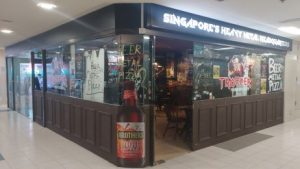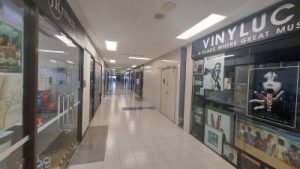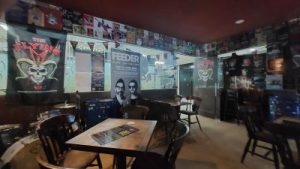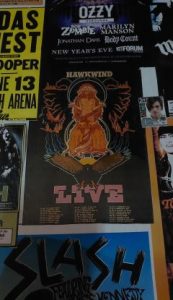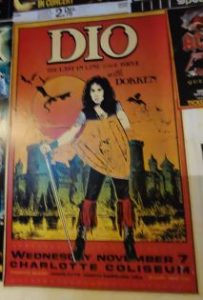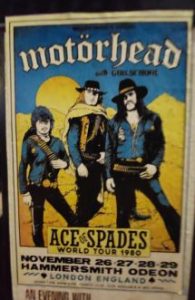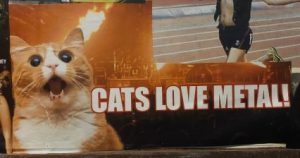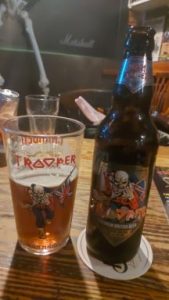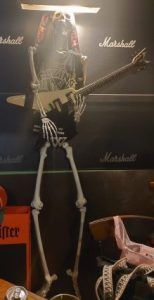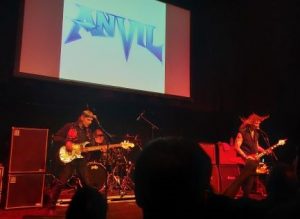

Warning — this post contains spoilers for Anvil! The Story of Anvil.
2008’s Anvil! The Story of Anvil is surely one of the best rock-music documentaries ever made. It unflinchingly charts the multiple mishaps that befall Toronto heavy-metal band Anvil during the early 21st century. Two decades earlier, Anvil had seemed on the cusp of making the big time – for instance, they’d headlined the 1984 Super Rock Festival in Japan alongside Bon Jovi, Whitesnake and the Scorpions – but then they’d faded into obscurity. However, they never stopped playing and recording, albeit for small (sometimes non-existent) audiences and a very limited fanbase. Watching The Story of Anvil, I got the impression that the reason for the band’s lack of success was simply a run of bad luck, both catastrophic and comical.
For its first 20 minutes, I found The Story of Anvil hilariously funny. It was as amusing as the legendary spoof ‘rockumentary’ This is Spinal Tap (1984). Indeed, it seemed ironic that Anvil’s drummer had the same name as This is Spinal Tap’s director, Rob Reiner. Well, almost – Robb the drummer has two ‘b’s in his first name, whereas Rob the director has one ‘b’.
But as the disappointments, disagreements and disasters mount up, as the viewer is subjected to a relentless series of empty concert venues, booking mishaps, record label rejections and scenes where singer / lead guitarist Steve ‘Lips’ Kudlow gamely struggles on with his day job, which is delivering trolleys of pre-packaged, catering-company meals through Canadian blizzards, the film stops being funny. As the fact sinks in that Anvil is a real band, not a fictional one like Spinal Tap, whose middle-aged members are striving to do the thing they love in the face of massive and soul-destroying odds, the film becomes rather tragic. Particularly gruelling is the scene where, trying to scrape together some money to fund the recording of a new album, Kudlow takes on one of the worst jobs on earth, as a telemarketer. When it comes to giving people unwanted phone calls and trying to persuade them to buy unwanted products, he’s as successful at it as I would be – he’s miserably crap at it.
As the film neared its end, I found myself pleading for the band to have one, just one sustained piece of good luck. When they’re invited to perform at a three-day music festival in Japan, it looks like the good luck has finally arrived. But no, they’re then informed that they’re scheduled to play the very first slot on the very first day, coming onstage in the morning when it’s unlikely that most of the audience will have turned up yet… By this point, I’d concluded that The Story of Anvil was an exercise in utter nihilism, warning about the folly of trying to chase your creative dreams and not accepting your fate as a catering-company delivery man or (in Reiner’s case) a construction worker. However, in a final twist, the documentary shows the band trudging despondently onstage at the Japanese festival, just before noon, and discovering to their joy that the auditorium is in fact packed with appreciative fans. Talk about a cathartic finale. I exhaled such a huge sigh of relief that I almost deflated over my cinema seat. (Though now that I think about it, and having lived in Japan, I could have told Kudlow and Reiner that you can always depend on the Japanese to show up on time.)
It probably wasn’t how they’d wanted to re-establish their name, but The Story of Anvil was such a critical and commercial success that the band got their second wind on the back of it. Since then, they’ve played at major heavy-metal festivals like Download, Hellfest and Wacken Open Air, provided support for the likes of Metallica and AC/DC and had their songs featured in the soundtracks of movies like It (2017) and TV shows like The Simpsons (1989-present). Currently, the band is on its Impact is Imminent tour, the East Asian leg of which brought them to my current abode, Singapore, a week ago.
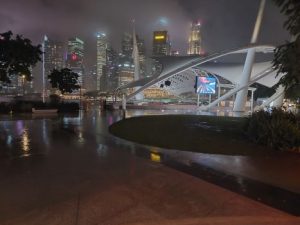
The weather that evening was the sort of thing that could have appeared in The Story of Anvil as a bad-luck factor stopping an audience from attending one of their gigs. It’d rained torrentially since the start of the afternoon and there was still no sign of it easing off when I arrived at the venue, the Esplanade Annex Studio, just before eight o’clock. At least the rain-drenched view outside the studio, of Singapore’s skyscraper-choked Central Area on the far side of the waters where the Singapore River reaches Marina Bay, had an evocatively Blade Runner-type vibe.
I was dreading what I’d find when I entered the Annex Studio. An empty or near-empty auditorium, signalling that the Curse of Anvil had returned? Or a strictly regulated, typically Singaporean venue with row upon row of seats, where there was no space to get up, move around and shake a leg – imagine having to sit during a heavy-metal concert? Or worst of all, a combination of both, a place packed with seats but devoid of people? Thankfully, the interior was seat-less and, while it wasn’t full yet, it seemed to be filling at a steady pace. I was also pleased to see that a makeshift bar had been installed in a back corner, courtesy of Singapore’s premiere heavy metal-themed pub, the Flying V Metal Bar on Coleman Street. Among the offerings on its menu were ‘Iron Maiden Trooper Beer’. Well, with a name like that, I just had to sample a pint of it. And then I sampled another pint. And then I sampled another….
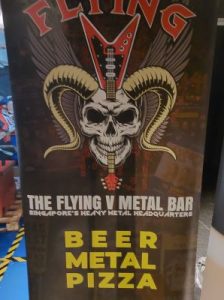

There was a decent-sized crowd present when the support band, local outfit Deus Ex Machina, came on and performed a well-received set. I liked how the standard heavy-metal T-shirts, long hair and beards sported by 80% of the band contrasted with the appearance of the singer, who had a sensible haircut and was in a sensible short-sleeved shirt and looked like he’d just arrived after a (slightly dress-down) day at the office. This being Singapore, perhaps he had.
Then Anvil came onstage and it was immediately clear how much love there was for them in the room. While they opened with their instrumental number March of the Crabs (which wasn’t inspired by pubic lice or even by the horror novels of Guy N. Smith, but by Kudlow’s observation that his hand had to move crab-like up and down his guitar strings as he played it) from the 1982 album Metal On Metal, Kudlow wasted no time in leaving the stage and joining the audience below. At which point, he disappeared amid a sea of adoring fans and amid a forest of arms holding smartphones aloft to film him.
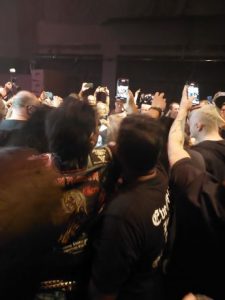
There ensued 90 minutes of gloriously old-school heavy metal, the tunes interspersed with crowd-pleasing banter from Kudlow. He got a knowing and affectionate cheer when he introduced one song as being about sticking with your dreams and never giving up, which obviously he knew all about. He also delivered an anecdote about an encounter with the late, legendary Lemmy, though to be honest his Lemmy impersonation sounded more like Dick Van Dyke’s chimney-sweep in Mary Poppins (1964) than the famously gravelly tones of the frontman of Motorhead. Generally, after the indignities they’d suffered in The Story of Anvil, it was a tonic to see them up on stage 15 years later, thoroughly enjoying themselves – even if a moment where Kudlow and bassist Chris Robertson saluted each other got a bit Alan Partridge-esque. The gig also demonstrated what an excellent drummer Robb Reiner is. A couple of times during the film, he’d been shown at the end of his tether and threatening to quit the band. Well, I’m glad he didn’t.

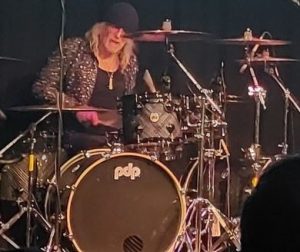
The closing number was probably their best-known song, the title track of Metal on Metal, which was the one featured on The Simpsons and which kicks off with the memorable lines, “Metal on metal / It’s what I crave / The louder the better / I’ll turn in my grave!” After which, Kudlow couldn’t resist descending into the crowd again. This time, it seemed like everyone in the venue managed to take a selfie with him. Well, not everyone. I didn’t want to break my phone-camera by taking a picture of my bleary, aged, worse-for-wear features. But I did make a point of going up to him, shaking his hand and thanking him and his band for a job well done tonight.
It’s a job he’s still doing, against the odds, and a job he obviously loves. A lucky man – at last.

